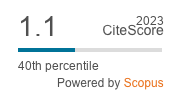Malaysian Journal of Mathematical Sciences, February 2017, Vol. 11(S)
Special Issue: Conference on Agriculture Statistics 2015 (CAS 2015)
Cubic Spline as a Powerful Tools for Processing Experimental Drying Rate Data of Seaweed Using Solar Drier
Ali, M. K. M., Sulaiman, J., Yasir, S. M., Ruslan, M. H., Fudholi, A., Muthuvalu, M. S., and Ramu, V.
Corresponding Email: [email protected]
Received date: -
Accepted date: -
Abstract:
A solar drying experiment of seaweed, Kappaphycus alvarezii var. tambalang using v-groove hybrid solar drier (v-GHSD) was conducted in
Semporna, Sabah, under the meteorological condition of Malaysia. Drying of the seaweed in the v-GHSD led to a reduction in its moisture
content from 85.32% to 38% in 5 days with mean solar radiation of 650W m\(^{-2}\) and mass flow rate of approximately 0.27 kg s\(^{-1}\). Generally, the plots of the drying rate required more smoothing compared to the moisture content data; special care was needed at low drying rates and moisture contents. Here, we show that the cubic spline (CS) can be effective for estimating the drying rate-time curves. The idea of this method consists of an approximation of data by a CS regression having first and second derivatives. The analytical differentiation of the spline regression permitted the determination of instantaneous rate. The method of minimizing the function of average risk was used successfully to solve the problem. This method allowed us to obtain the instantaneous rate directly from the experimental data. Mathematical models using the raw data tested with the smoothed CS were found to be reliable estimators of the moisture-time curves as well as for the missing moisture content data of the seaweed.
Keywords: Mathematical modeling, solar drying, drying curve, rate data, smoothing, moisture content, cubic spline, seaweed Kappaphycus alvarezii var. tambalang









